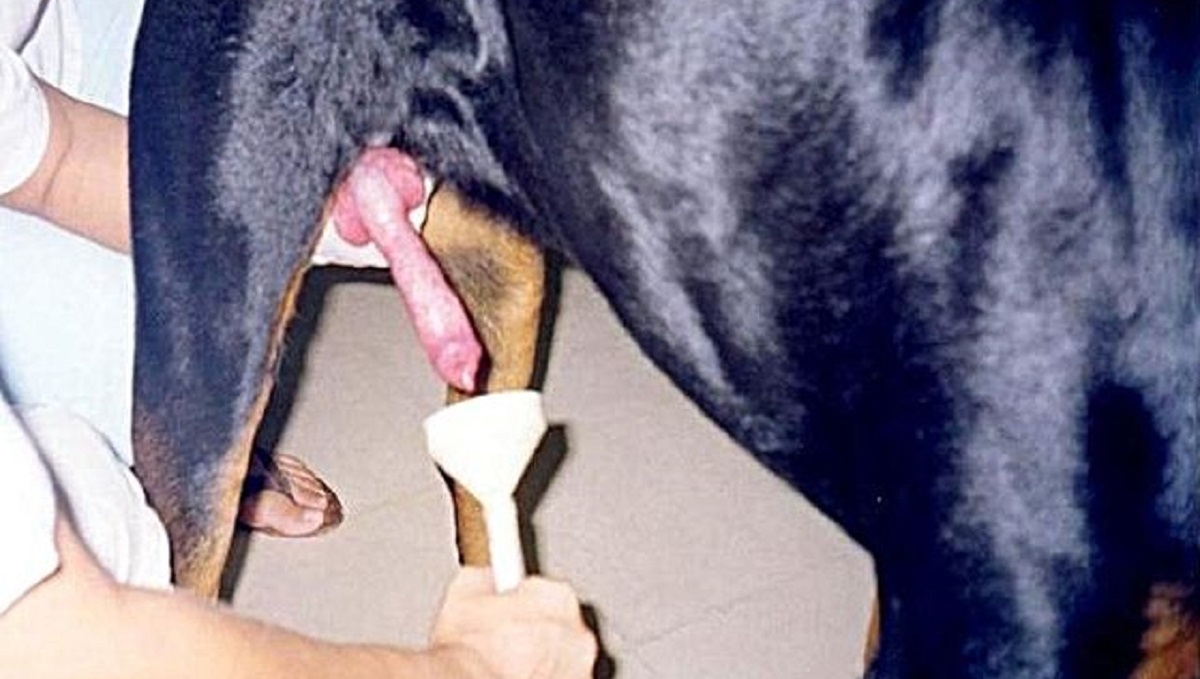What Colour is Dog Sperm?
Dog sperm is typically a translucent color, with a slight whitish or yellowish hue. Healthy canine ejaculate is slightly opaque due to its concentration. Understanding the characteristics of dog sperm is crucial for breeders and veterinarians alike.
Color can indicate the health and fertility of the semen, which is vital for breeding programs. Canine reproductive health is a significant aspect of veterinary sciences, with semen analysis being a common procedure.
This short guide explores the norms and deviations in the appearance of dog sperm, aiding in the identification of potential reproductive issues. Breeders should watch for changes in color and consistency, as these could signal underlying health concerns.
Always ensure that the information provided is based on scientific evidence and adheres to current veterinary standards.
The Anatomy Of Dog Sperm
The enigmatic world of canine reproduction boasts fascinating details, not least of which is the anatomy of dog sperm. This microscopic marvel plays a crucial role in the continuation of various dog breeds.
To understand its importance, a closer look at its structure and function is necessary. Moving beyond the color or appearance of dog sperm, the intricacies of these cells reveal the wonders of canine biology. Let’s delve into the structure and function of dog sperm.
Structure Of Dog Sperm
Dog sperm, much like human sperm, has a distinctive structure, tailormade for its purpose. It consists of three main parts:
- Head: Contains genetic material
- Midsection: Packed with energy-giving mitochondria
- Tail: Propels the sperm forward
The head is capped with an acrosome, which contains enzymes. These enzymes help the sperm penetrate the egg. The tail’s undulating movements are crucial for its mobility, guiding it to the egg successfully.
Function Of Dog Sperm
Dog sperm has one primary purpose: to fertilize the female dog’s egg. For successful fertilization, dog sperm undergoes a journey:
- It travels through the female’s reproductive tract.
- The acrosome reaction occurs, allowing the sperm to enter the egg.
- Genetic material merges, initiating the creation of a new life.
The quality, motility, and vitality of the sperm are pivotal for successful conception. These traits determine the sperm’s ability to withstand the journey and fertilize the egg.
Factors Affecting The Color Of Dog Sperm
When it comes to breeding dogs, understanding sperm health is crucial. It’s not just about fertility; the color can signal overall vitality. Several factors influence sperm color.
They vary from breed to breed. What a dog eats and its health also plays a part. Let’s explore what can affect the color of dog sperm.
Breed Variations
Like humans, each dog breed is unique. Genetic makeup can influence sperm characteristics, including color. Researchers are studying breed-specific attributes. These studies will help understand how breed affects sperm color.
Diet And Nutrition
Good nutrition means healthy sperm. Different foods can change sperm color. For example, antioxidants in certain foods may enhance sperm quality.
- Vitamins and minerals support reproductive health.
- Foods rich in Omega-3 promote better sperm vitality.
Health Issues
Unusual sperm color often means health issues. Infections or diseases can cause changes. A vet visit is essential if you notice anything odd.
| Sperm Color | Possible Health Issue |
|---|---|
| Yellowish | Infection |
| Brownish | Blood contamination |
| Transparent | Lack of sperm |
Common Colors Of Dog Sperm
When noticing the color of dog sperm, one might wonder what colors are normal and what each color indicates about a dog’s health. Understanding the common colors of dog sperm is crucial for breeders and dog owners alike. Let’s explore the different shades you might encounter.
White
White is the color most people expect. It usually indicates healthy sperm. Consistency can vary from watery to thick. It’s important for breeding success.
Transparent
Transparent or clear sperm is also normal. It can appear in young dogs or less frequently in adults. It suggests a lower sperm count but isn’t always a concern.
Yellowish
Yellowish tint may occur naturally. But it can sometimes signal a mild infection or dehydration. It’s best to monitor this color change.
Brownish
Brownish sperm is unusual. It may indicate older blood or a health issue. It’s important to seek veterinary advice if this color is observed.
Greenish
A greenish hue to the sperm could suggest an infection, especially if accompanied by a foul smell. A prompt veterinary checkup is crucial.
When To Be Concerned
Understanding the colors associated with dog sperm is important for breeding and health monitoring. Typically, dog sperm is a pearly white or slightly yellowish in tint. However, certain hues can raise red flags for pet owners and breeders.
Knowing when to be concerned about the color of dog sperm helps ensure the well-being of your canine companion.
Abnormal Coloration
Dog owners should take note of any unusual changes in sperm color. Pay attention to any shades that deviate from the norm. Here are some colors that could signal a potential issue:
- Greenish tint: May suggest an infection.
- Red or brown: Often points to the presence of blood.
- Dark yellow: Could indicate dehydration or other health concerns.
If you spot these colors, it is crucial to consult a veterinarian as soon as possible.
Accompanied By Other Symptoms
Discoloration alongside additional symptoms should prompt immediate action. Be alert for signs such as:
- Difficulty urinating.
- Visible discomfort in your dog.
- Unusual smell accompanying the discoloration.
- Lethargy or changes in behavior.
These symptoms, combined with abnormal sperm color, can indicate serious health issues. Seek a veterinarian’s advice to ensure your dog’s health is not at risk.
Frequently Asked Questions
What Color Should Healthy Dog Sperm Be?
Healthy dog sperm is generally a pearly white or translucent color. Any significant deviation may indicate a health issue.
Can Dog Sperm Color Indicate Fertility?
Yes, a clear, whitish color typically signifies normal fertility, while discoloration can suggest a potential issue with sperm health.
Is Dog Sperm Color Consistency Normal?
Normal dog sperm has a uniform consistency; variations could be a sign of infection or other health concerns.
What Causes Changes In Dog Sperm Color?
Changes in dog sperm color can be caused by infections, diet, underlying health issues, or even the age of the dog.
How To Assess Dog Sperm Health At Home?
While color and consistency observations can be made at home, accurate assessment of dog sperm health usually requires a veterinarian’s analysis.
Conclusion
Understanding the characteristics of canine reproductive fluids can be essential for breeders and pet owners alike.
Typically, healthy dog sperm is a whitish-gray color, although variations can occur. Recognizing normal versus abnormal colors helps ensure the well-being of your furry friend.





